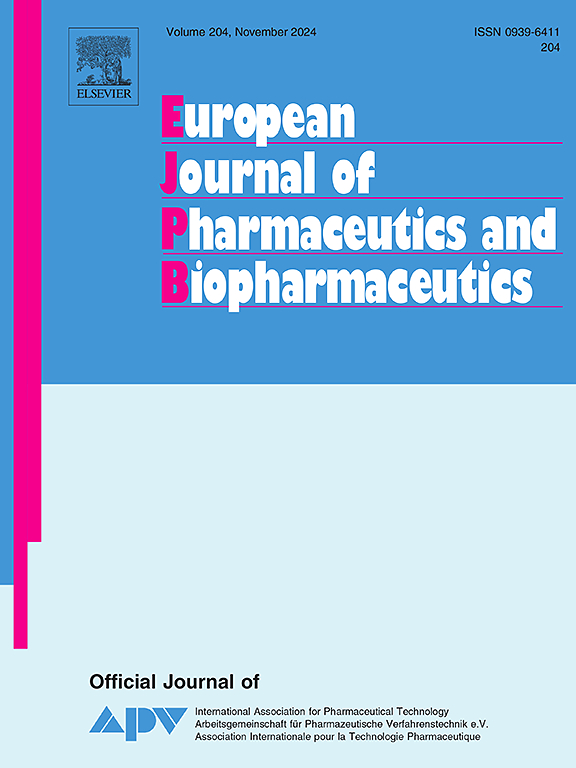Advancing forced degradation studies: Design of experiments for enhanced structure-function relationship analysis in biotherapeutics
IF 4.3
2区 医学
Q1 PHARMACOLOGY & PHARMACY
European Journal of Pharmaceutics and Biopharmaceutics
Pub Date : 2025-06-14
DOI:10.1016/j.ejpb.2025.114787
引用次数: 0
Abstract
Understanding the relationship between structure and function is crucial in drug development. Recombinant proteins present unique challenges when establishing structure–function relationships (SFR) due to the extensive options for potential modifications across numerous residues. Even simple stress studies lack degradation selectivity as they lead to multiple, simultaneous modifications. Co-occurring modifications at amino acid residues make direct correlations with a specific stressor and resolving the causal impact on functionality difficult. The introduction of more variance into the data set would reduce the correlation structure. In this study, we demonstrate the feasibility and benefits of a multifactorial design approach for SFR establishment. Design of experiments (DoE) allows for the parallel investigation of stress factors via combined experiments, resulting in a higher variance of stress conditions and consequently a broader variation in degradation. This approach enables a more insightful correlation analysis along with model-based data evaluation strategies, thereby facilitating significantly improved data interpretation results during SFR studies.

推进强制降解研究:生物治疗中增强结构-功能关系分析的实验设计。
了解结构和功能之间的关系对药物开发至关重要。重组蛋白在建立结构-功能关系(SFR)时面临着独特的挑战,因为在众多残基之间有广泛的潜在修饰选择。即使是简单的应力研究也缺乏降解选择性,因为它们会导致多个同时发生的修饰。在氨基酸残基上共同发生的修饰使得与特定应激源的直接相关性和解决对功能的因果影响变得困难。在数据集中引入更多的方差会降低相关结构。在这项研究中,我们论证了多因素设计方法建立SFR的可行性和好处。实验设计(DoE)允许通过组合实验对应力因素进行平行研究,从而导致应力条件的较大差异,从而导致退化的更大变化。该方法能够进行更有洞察力的相关性分析以及基于模型的数据评估策略,从而在SFR研究中显著改善数据解释结果。
本文章由计算机程序翻译,如有差异,请以英文原文为准。
求助全文
约1分钟内获得全文
求助全文
来源期刊
CiteScore
8.80
自引率
4.10%
发文量
211
审稿时长
36 days
期刊介绍:
The European Journal of Pharmaceutics and Biopharmaceutics provides a medium for the publication of novel, innovative and hypothesis-driven research from the areas of Pharmaceutics and Biopharmaceutics.
Topics covered include for example:
Design and development of drug delivery systems for pharmaceuticals and biopharmaceuticals (small molecules, proteins, nucleic acids)
Aspects of manufacturing process design
Biomedical aspects of drug product design
Strategies and formulations for controlled drug transport across biological barriers
Physicochemical aspects of drug product development
Novel excipients for drug product design
Drug delivery and controlled release systems for systemic and local applications
Nanomaterials for therapeutic and diagnostic purposes
Advanced therapy medicinal products
Medical devices supporting a distinct pharmacological effect.

 求助内容:
求助内容: 应助结果提醒方式:
应助结果提醒方式:


